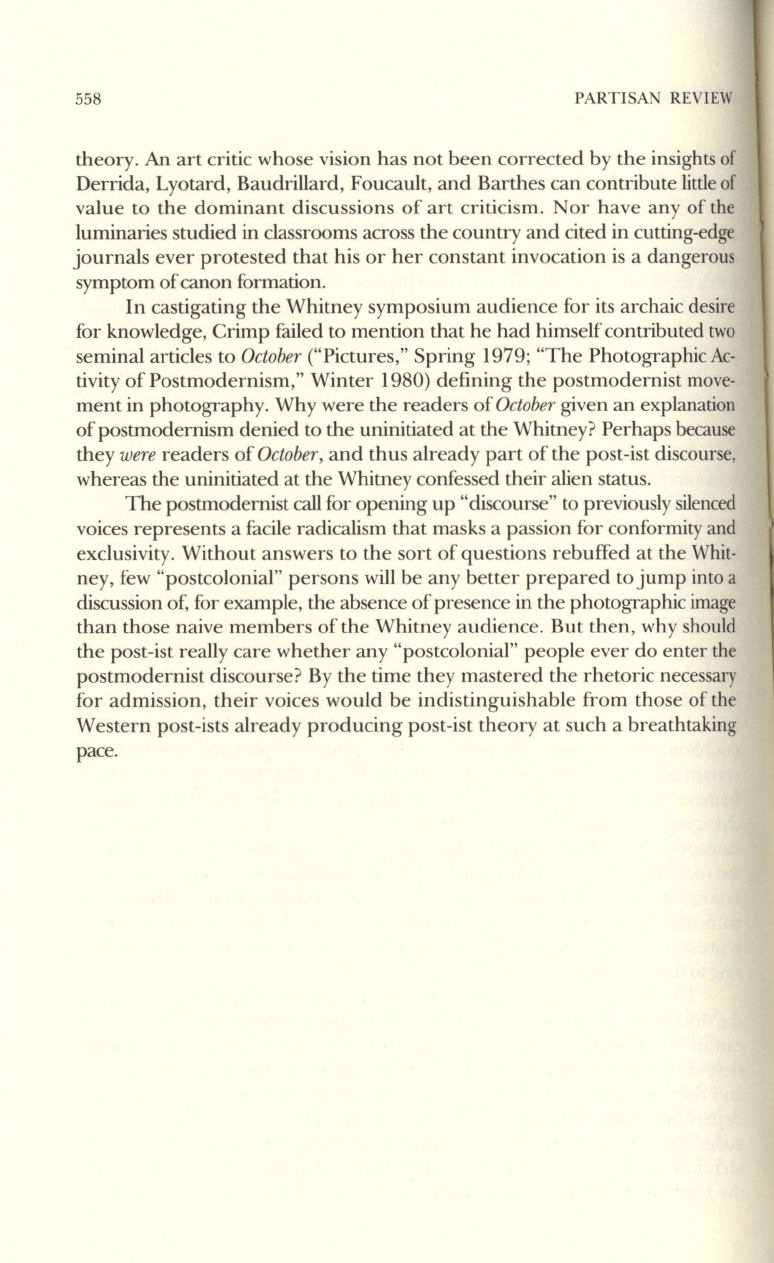
558
PARTISAN REVIEW
theory.
An
art critic whose vision has not been corrected by the insights of
Derrida, Lyotard, Baudrillard, Foucault, and Barthes can contribute little of
value to the dominant discussions of art criticism. Nor have any of the
luminaries studied
in
classrooms across the country and cited in cutting-edge
journals ever protested that his or her constant invocation is a dangerous
symptom ofcanon formation.
In castigating the Whitney symposium audience for its archaic desire
for knowledge, Crimp failed to mention that he had himself contributed two
seminal articles to
October
("Pictures," Spring 1979; "The Photographic Ac–
tivity of Postmodernism," Winter 1980) defining the postmodernist move–
ment in photography. Why were the readers of
October
given an explanation
ofpostmodernism denied to the uninitiated at the Whitney? Perhaps because
they
were
readers of
October,
and thus already part of the post-ist discourse,
whereas the uninitiated at the Whitney confessed their alien status.
The postmodernist
call
for opening up "discourse" to previously silenced
voices represents a facile radicalism that masks a passion for conformity and
exclusivity. Without answers to the sort of questions rebuffed at the Whit–
ney, few "postcolonial" persons will be any better prepared to jump into a
discussion of, for example, the absence of presence in the photographic image
than those naive members of the Whitney audience. But then, why should
the post-ist really care whether any "postcolonial" people ever do enter the
postmodernist discourse? By the time they mastered the rhetoric necessary
for admission, their voices would be indistinguishable from those of the
Western post-ists already producing post-ist theory at such a breathtaking
pace.


